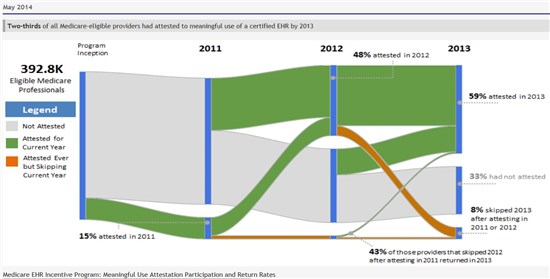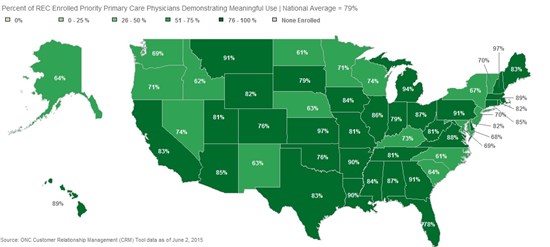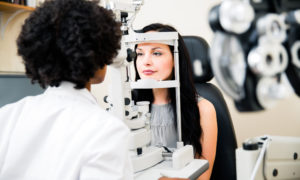
Sept. 23, 2015
Over half of the health care offices you co-manage with have achieved Meaningful Use of electronic health records, statistics from Health IT Dashboard suggest. As of April 2015, 54 percent of all U.S. office-based physicians (MD/DO) have demonstrated Meaningful Use of certified health IT in the Centers for Medicare and Medicaid Services (CMS) Electronic Health Record (EHR) Incentive Programs. Twelve percent of nurse practitioners (NPs), and less than 2 percent of physician assistants (PAs), have demonstrated Meaningful Use of certified health IT. Forty-six percent of all physicians, NPs and PAs have demonstrated Meaningful Use of certified health IT.
Do you want to continue to deliver medical eyecare to the patients you serve? If so, then you must be up-to-date with Meaningful Use. Meaningful Use is not going to go away. Meaningful Use is one of the criteria being used to determine who will be inside the narrowed networks of the Affordable Care Act, and who will left outside.
What’s the big deal about not being inside the ACA narrowed networks?
In the average medically oriented optometric practice about 30-40 percent of the revenue comes from the delivery of medical eyecare. If you are not current with Meaningful Use, and you are left outside the ACA narrowed networks as they form over the next two years, then your practice will be limited to just refractive care of patients. To emphasize that point, let’s say that in a different way: What changes will you need to make to your practice if you have a 30-40 percent decrease in revenue in the next two years?
A helpful tool to help you understand Meaningful Use is the Vision Source’s 2015 Navigation Guide to Health Care Reform for Independent Optometrists.
In the chart below (click HERE or on the image to see a larger version of it) is a look at how doctors in general are responding to Meaningful Use. Pay particular attention to the trend lines. What trend line are you on?
It’s really quite simple: doctors who have not attested will not be able to communicate with other healthcare providers via EHR, and, therefore, will not be invited into the ACA narrowed networks. The push is on to get doctors to demonstrate Meaningful Use.
The chart below (click HERE or on the image to see a larger version of it) shows how priority primary care physicians are responding. Notice the operative word “priority” in describing primary care physicians. Even the medical world is beginning to separate into two different camps – those that have accepted Meaningful Use and those that have not. The question keeps coming back to: do you want to continue to deliver primary medical eyecare?
Keep things in perspective. This is not a new road for us as a profession. We went down this same road when pharmaceutical agents were introduced into the profession. Some doctors buried their heads in the sand and said they would never change … and they didn’t … and the profession left them behind (in marketing terms, these people are called laggards). Some took a long time to get caught up with a profession that had changed … and they survived … eventually (in marketing terms, these people are called late adopters). And some were the early adopters, and their practices thrived. An important question facing you is: how are you positioning your practice? Are you a laggard, a late adopter or an early adopter?
Next year, Meaningful Use Stage 3 is expected. That means you should be at Meaningful Use Stage 2 this year. If you are not there, then you are behind. Don’t delay anymore. Get it done. If you want to continue to deliver medical eyecare to your patients, then today is the day to get moving to get caught up.





























